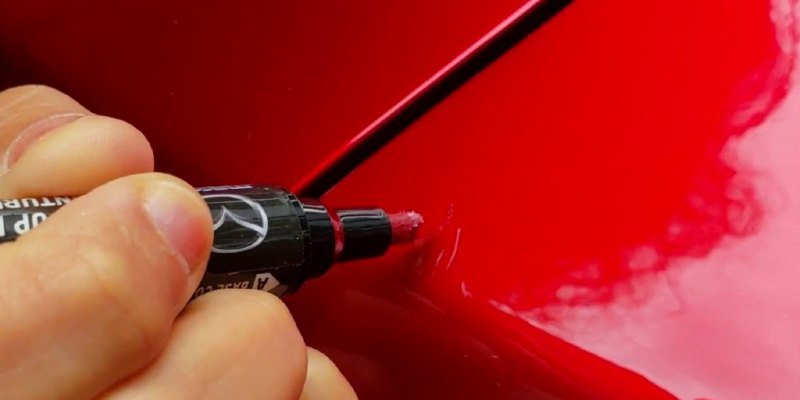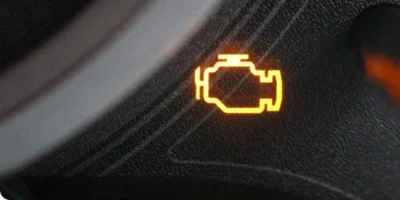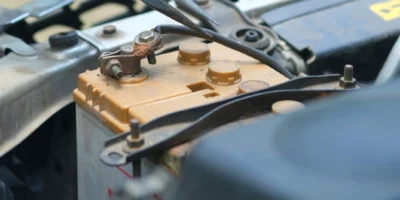What is the correct way to touch up car paint easily? Our step by step guide shows you how to fix paint damage on a car, and when not to.
Find more car and motorcycle guides, tips and advice
Painting by a professional is expensive, but with a little skill you can touch up car paint easily and repair minor paint damage yourself.
Impacts or small scratches – damage to the car’s paintwork not only looks unattractive, it also harbors the risk of rust. Even very small affected areas are a target for corrosion. And once the rust has spread, it quickly causes worse damage than was originally the case. Therefore, you should also quickly repair small paint damage. There are different possibilities for this.
The most expensive option is probably a visit to the painter, but professional paintwork is often not necessary for stone chips and fine scratches. It is usually sufficient to touch up the affected area. And you can touch up car paint easily yourself.
When does paint damage have to be repaired?
The lacquer consists of several layers. If only the clear coat is damaged, scratches can usually be polished away.
Under the clear paint and metallic paint there is also a filler paint, the primer and a layer of phosphate. As long as the small scratches are only in the area of the clear coat, they can usually be removed by thorough polishing or with a special scratch remover.
As soon as the metallic paint or deeper layers have been reached, the polishing machine can no longer go any further. In addition, the risk of corrosion increases. The paintwork damage should be repaired and painted as soon as possible. Depending on the depth of the scratch, it is sufficient to sand the area, treat it with a little spray spatula and varnish it. Deeper scratches must be touched up in more detail.
How to touch up car paint easily
Small stone chips can be touched up with a touch-up pen and wire brush.In the event of minor damage to the car paintwork, the painter does not have to be visited immediately. Often they can simply be repaired on your own. However, every hobbyist should be aware that he will never achieve such a result at home as a professional. But even a less professional paint repair is better than letting the rust do the job.
Important: The parts to be painted must be cleaned and degreased beforehand. It is best to use a silicone remover for this. Components that are difficult to access, such as the bumper, should be removed beforehand.
Mending stone chips :
Touch-up pens (such as the one shown in our main image) are suitable for repairing stone chips. They can be ordered from the manufacturer in almost all original colors. Usually there is a small wire brush in the lid, so that the stone chips are sanded. Then carefully dab the paint into the stone chip with a brush and let the fresh paint dry. The surface becomes completely smooth if the spot is roughened with 1000 grit sandpaper after dabbing. Then polish.
Superficial scratches:
Superficial scratches, for example in the recessed grips of the doors, can easily be treated with scratch remover. Polish for a few minutes and wipe off the remains with a damp cloth. Let dry for 15 minutes at a time.
Deep scratches and paint damage:
Deep scratches, rust spots and paint cracks must be touched up before they can be painted. Depending on the position of the damage, it can be easier to dismantle the component beforehand. At the beginning, the affected area should be well masked along the edges in the sheet metal. Pay attention to folds and gaps in the paper.
How to proceed:
Step 1: Particularly deep damage must be filled with filler. To do this, filler is mixed and carefully applied to the affected area. If the damage is filled with filler, let it dry well.
Step 2: Thoroughly sand the filled areas (e.g. with a sanding machine or sanding block) until no more unevenness can be felt. This takes a lot of patience and time. It is best to start with a slightly coarser grain and use a finer grain for the finish.
Step 3: Thoroughly remove the sanding residue from the area to be painted with silicone remover and dust cloth.
Step 4: Then the surface can be sprayed with filler and painted. You can see further details on the procedure in the picture gallery:
When to see a professional?
If you want a professional result, you should leave the paint repair to the professional. Because everything that goes beyond polishing will never be as perfect on your own as with an expert in the specialist workshop. Small patches of repair work are of no help in the case of particularly large scratches or flaking paint. In such a case, the entire component should be repainted. The same applies here: only those who have no problems with color differences can tackle the whole thing themselves.




